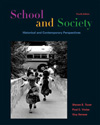Chapter 9 is the first chapter in Part II of the text and is thus the first chapter to develop Part I themes in a contemporary context. This chapter revisits the themes of liberty and literacy presented in Chapter 2. The contemporary perspective of Chapter 9 shows that the term "literacy" identifies more than one concept; that is, the meaning of literacy changes with historical setting and with ideological orientation. The various perspectives on literacy–conventional literacy, functional literacy, cultural literacy, and critical literacy–are shown to be historically grounded in Jefferson’s own respect for the importance of literacy in democratic life, as Jefferson’s account of literacy shows affinities with each of these four perspectives. One issue that may be raised with these four perspectives on literacy is the question of whose interests seem well served and whose interests seem poorly served by each. Classroom practices consistent with each perspective are briefly examined, with particular attention to the pedagogical implications of critical literacy as developed by Paulo Freire, Colin Lankshear, and Henry Giroux. This chapter presents critical hegemony theory as an explanation for the general absence of critical literacy that would allow most Americans to develop an alternative to the corporate liberal perspective. The Primary Source Reading at the end of the chapter shows how one contemporary educator seeks to foster critical literacy among his own students. | 


 2002 McGraw-Hill Higher Education
2002 McGraw-Hill Higher Education